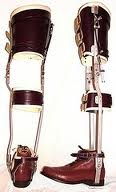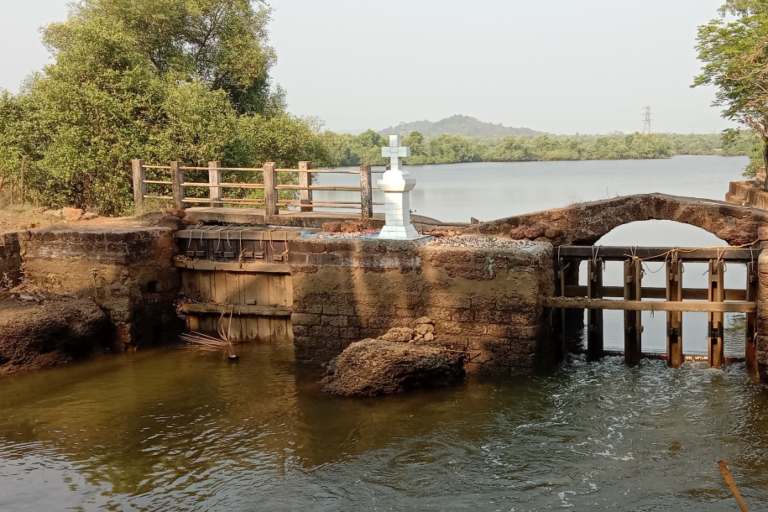By Neena Bhandari
 Sydney, 28.07.2007 (The Australian): On a sweltering February day in 1951, one-year-old Maura Outterside’s tiny body was gripped by high fever and muscle pain. As she became non-responsive, her parents wrapped her in cold towels and took her to St George Hospital in Sydney. A lumbar puncture confirmed every parent’s worst nightmare in those days — poliomyelitis, the viral disease responsible for crippling hundreds of thousands of children during the 20th century. Polio epidemics from 1930 to 1970 afflicted 40,000 Australians, including media tycoon Kerry Packer, talkback radio host John Laws and former Labor leader Kim Beazley.
Sydney, 28.07.2007 (The Australian): On a sweltering February day in 1951, one-year-old Maura Outterside’s tiny body was gripped by high fever and muscle pain. As she became non-responsive, her parents wrapped her in cold towels and took her to St George Hospital in Sydney. A lumbar puncture confirmed every parent’s worst nightmare in those days — poliomyelitis, the viral disease responsible for crippling hundreds of thousands of children during the 20th century. Polio epidemics from 1930 to 1970 afflicted 40,000 Australians, including media tycoon Kerry Packer, talkback radio host John Laws and former Labor leader Kim Beazley.
The crippling disease gripped entire communities with fear. “Kids in Victoria went to school with pegs on their noses. They didn’t know how it was being transmitted,” says a former nurse turned historian, doctor Kristine Klugman. “They only knew people had to be isolated. Worse, polio carried a stigma and it still does. People who had polio don’t want to talk about it.”
A highly infectious disease, polio is caused by a virus that mainly affects children under five years of age. While 90 per cent of cases do not cause symptoms, in some cases it invades the nervous system and can lead to paralysis. The virus enters the body through the mouth and multiplies in the intestine. Initial symptoms are fever, fatigue, headache, vomiting, and stiffness in the neck and pain in the limbs. Fewer than 1 per cent of people infected suffer paralysis, but the other 99 per cent are still able to transmit the virus.
Effective vaccines brought polio under control. In 1955, Jonas Salk in the US discovered the inactivated polio vaccine (IPV), and six years later his rival Albert Sabin introduced the oral polio vaccine (OPV).
Australia, the Americas, Western Pacific and 51 European-region countries have been declared polio-free by the World Health Organisation (WHO).
But just when the world seemed a step closer to the eradication of this deadly disease, the virus has raised its ugly head in Australia.
Earlier this month, a 22-year-old Pakistani student became the first confirmed Australian case of polio in 21 years. Tests showed the man, who arrived on a Thai Airways flight from Bangkok carrying 249 passengers, was carrying a strain of polio similar to types circulating in Pakistan’s North West Frontier Province, one of that country’s last remaining polio-infected areas. The man remained in isolation in a Melbourne hospital this week pending the result of tests. All but three passengers contacted by Victorian health authorities accepted a booster polio shot, but 29 passengers could not be contacted.
Their details were passed on to the federal health department, which traced some more of these last passengers. But the department this week said it was ceasing attempts to contact the last 15 passengers, whose details on passenger landing cards were inaccurate or unreadable, because the risk of infection was low.
“This case means polio is only a plane trip away from Australia,” says Mary Westbrook, a conjoint associate professor in the Faculty of Medicine at the University of NSW. “It is a worry, because there is a pool of unvaccinated people in (Australia). In fact, a large part of the non-vaccinated children are in the more affluent areas of the state.”
International travel between countries with endemic polio presents the greatest risk of spread of polio to non-immunised populations in polio-free countries. In 1988, polio paralysed more than 350,000 children in more than 125 endemic countries. That year, the World Health Assembly adopted a resolution to eradicate this ancient scourge — it marked the launch of the Global Polio Eradication Initiative.
Former WHO director-general Gro Harlem Brundtland said until the world stopped transmission of polio in remaining infected countries, “children everywhere will remain at risk of contracting this disease”.
The initiative — the world’s largest public health campaign — has achieved massive progress, although some of the gains have slipped. Polio remains endemic in four countries — Afghanistan, Pakistan, India and Nigeria — with fewer than 300 wild polio virus cases reported from them in 2007.
But some countries where polio was previously eradicated have recorded renewed outbreaks. Besides cases reported from endemic countries, the re-infected countries — Angola, Myanmar, Chad, the Congo, Niger and Somalia — have also reported polio cases this year, showing the re-infection threat is very real.
As Dr Kenneth Collins, co-ordinator of Rotary’s polio program, says, the reinfection risk is very real. “We are advocating all children in Australia need to be immunised because we face the threat of polio being brought into the country by international travellers,” he says.
Australia moved to the injectable Salk vaccine in 2005 because of the potential danger of vaccine-associated paralytic polio, which affects approximately one in 2.4 million recipients of the alternative oral vaccine.
Polio vaccine is funded for children under the national immunisation Program, and is administered at two, four and six months with a booster at four years. Data from the Australian Childhood Immunisation Register on June 30 shows that 91.8 per cent of children aged from 12 to 15 months, and 95.1 per cent of children aged 24-27 months have received their polio vaccinations. In 2007-08, the Government is providing $45 million for polio vaccines.
Booster vaccine doses are recommended for adults and health care workers, if at risk, and for travellers visiting polio endemic countries.
“There are three types of polio and having one type does not, unfortunately, make us immune from the other two types,” says Mary-Ann Liethof of ParaQuad Victoria. “Fortunately, the vaccine immunises against all three types, so it is the only way we can ensure we are fully protected.”
Many of the 40,000 ill Australians who survived the polio epidemics of the 20th century are facing of new disabilities. While they initially recovered and made the most of life with disability, today they are battling with profound fatigue, increasing muscle weakness, joint and muscle pain, increased sensitivity to cold temperatures and sleeping, breathing or swallowing difficulties and frequent falls — all linked to late effects of polio.
Most doctors are not trained to recognise late effects of polio or the post-polio syndrome (PPS), or are reluctant to treat it as a new condition.
The main advocates for increased medical and government attention to PPS have been the support groups for polio survivors.
Merle Thompson, who had polio at 15 months of age on the first Anzac Day after World War II (April 25, 1946), is the vice-president of the NSW Post-Polio Network. She has produced a research report that shows that the interval between the initial polio illness and the onset of the late effects of polio is between 30 and 40 years.
According to the report findings, more than 80 per cent of participants in the polio group rely on at least one appliance, and 12 per cent use at least six appliances. Many have found their need to use aids has increased, particularly for mobility. A cure for polio is still a cherished dream.
With stringent preventive measures and vaccination drives, governments across the world also need to invest in medical and health care for ageing polio patients.
© Copyright Neena Bhandari. All rights reserved. Republication, copying or using information from neenabhandari.com content is expressly prohibited without the permission of the writer and the media outlet syndicating or publishing the article.

